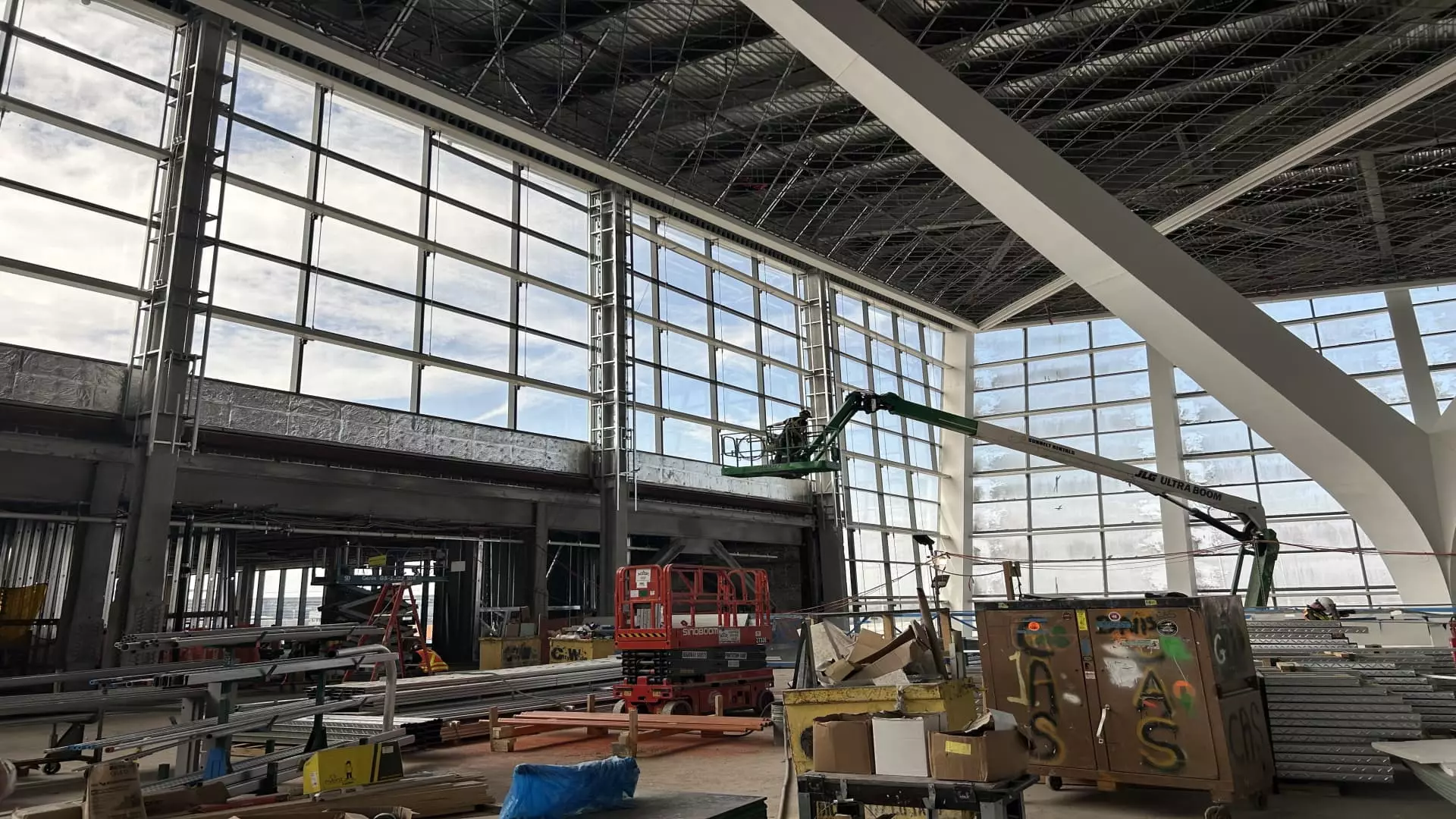The redevelopment of JFK Airport’s Terminal 1 promises to redefine international travel at the largest US air hub. With a $9.5 billion investment, this project exemplifies a significant push toward modernization, yet it raises critical questions about the priorities and long-term value of such grand spending. While the plans evoke dreams of increased efficiency, aesthetic brilliance, and passenger comfort, they also come with a stark reality—mega-projects often balloon in costs and risk alienating the very travelers they aim to serve. Is this behemoth a visionary leap forward or just another case of gluttonous excess in an already bloated infrastructure system?
The design, inspired by a butterfly’s elegance, hints at a modernist beauty that aims to impress visitors, with vast glass walls and a flood of natural light. However, beauty alone doesn’t guarantee functionality or cost-effectiveness. The emphasis on a bright, leveled space free of basement customs lines suggests a user-centric approach, yet it also showcases a trend toward superficial aesthetics over meaningful operational improvements. The question remains: will this aesthetic appeal translate into tangible benefits for the millions of travelers passing through each year, or is it merely a façade masking deeper issues of efficiency and allocation?
Financial Bottleneck and Political Conundrums
The bigger story isn’t just about design; it’s about the staggering financial commitment that underscores it. The JFK overhaul, part of a broader $19 billion plan including upgrades to other terminals, epitomizes the heavy-handed approach to infrastructure development in America. While $9.5 billion sounds colossal, the reality is that it’s a mere segment of a necessary but insufficient investment—an amount that arguably still falls short of what’s needed to truly modernize aging facilities nationwide.
Yet, the political implications of such spending are complex. These projects often serve as symbols of progress but are also fertile ground for criticism—waste, mismanagement, and political favoritism tend to cast shadows over the bright designs and optimistic opening timelines. For the local community and travelers alike, the concern is whether these investments truly improve experience or simply inflate budgets and project timelines, thus diverting funds from other vital infrastructure needs. The pending opening just ahead of the 2026 World Cup presents a tantalizing opportunity but also a high-stakes gamble—if delays and overruns occur, the project risks becoming a symbol of hollow promises rather than progress.
Workers, Environment, and the Human Cost
Beyond the financial and political layers lies an often-overlooked aspect: the human and environmental toll of such sprawling projects. Large-scale construction zones like JFK’s Terminal 1 invariably lead to labor controversies, environmental disruptions, and urban congestion. While the airport’s administrators tout roadway improvements and new transit integrations, these benefit relatively few compared to the upheaval caused during construction.
Furthermore, the focus on expanding capacity and retail spaces seems to prioritize corporate interests over the everyday needs of travelers. Will the promised “shopping paradise,” including the novel duty-free concept, genuinely elevate the experience or merely cater to affluent passengers? What about the environmental sustainability of such projects? The ecological footprint of construction, increased aircraft capacity, and extended utility demands remain pressing concerns that are often minimized amidst inflationary costs and political rhetoric.
Unless more comprehensive measures are adopted to address these critical issues, JFK’s Terminal 1 risks becoming a symbol of architectural ambition that overlooks the foundational needs of accessible, sustainable, and truly efficient air travel. The burgeoning capacity—aiming for over 14 million passengers annually with over 300,000 square feet of retail—paints a picture of grandeur. But will it serve the average traveler or just the high-paying elite and corporations? That ambiguity points to a broader question about priorities in America’s infrastructure investments: are we building for the future or simply indulging in aesthetic and technological excess?
A Critical Reflection: Promises vs. Reality
Ultimately, JFK’s new Terminal 1 embodies the contradictions at the heart of modern infrastructure projects. It is a symbol of American ambition to remain competitive in global travel, yet it also exemplifies the risk of prioritizing spectacle over substance. As a center of commerce, politics, and innovation, airports are crucial gateways that should serve as models of efficiency, sustainability, and human-centered design.
However, the current trajectory suggests a possible drift toward superficial enhancements that might fall short of addressing core issues such as congestion, environmental impact, and equitable access. The real challenge lies in ensuring that such massive investments translate into genuine improvements that benefit all stakeholders—something that remains to be seen as the project unfolds.
In the end, JFK’s Terminal 1 will either stand as a testament to visionary thinking or become yet another costly chapter in America’s ongoing struggle with infrastructure reform. The jury is still out, but the stakes could not be higher.

